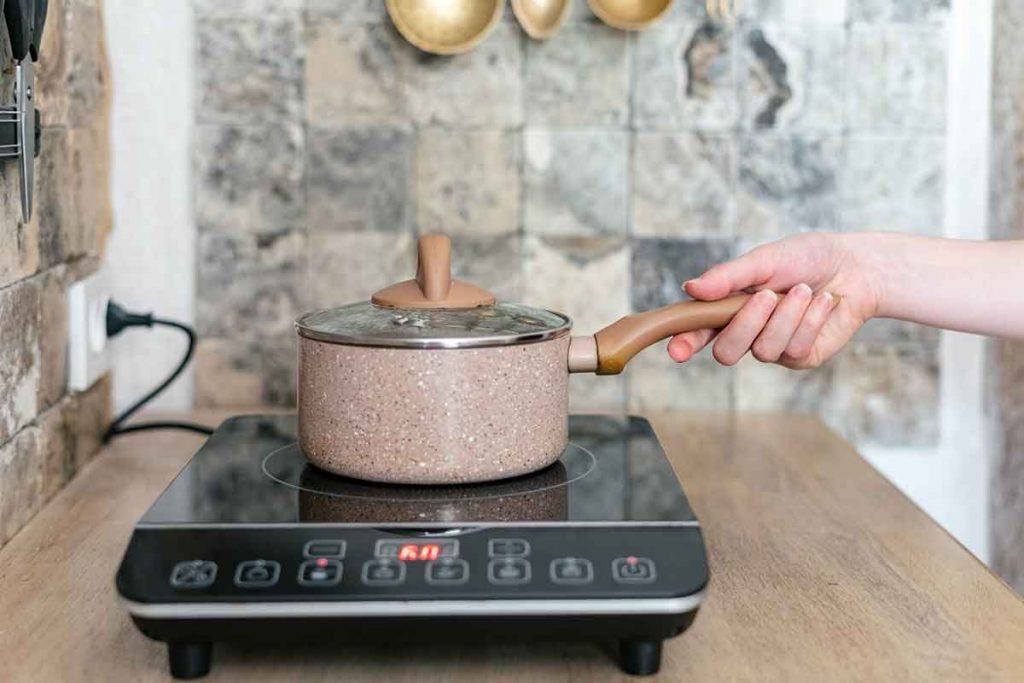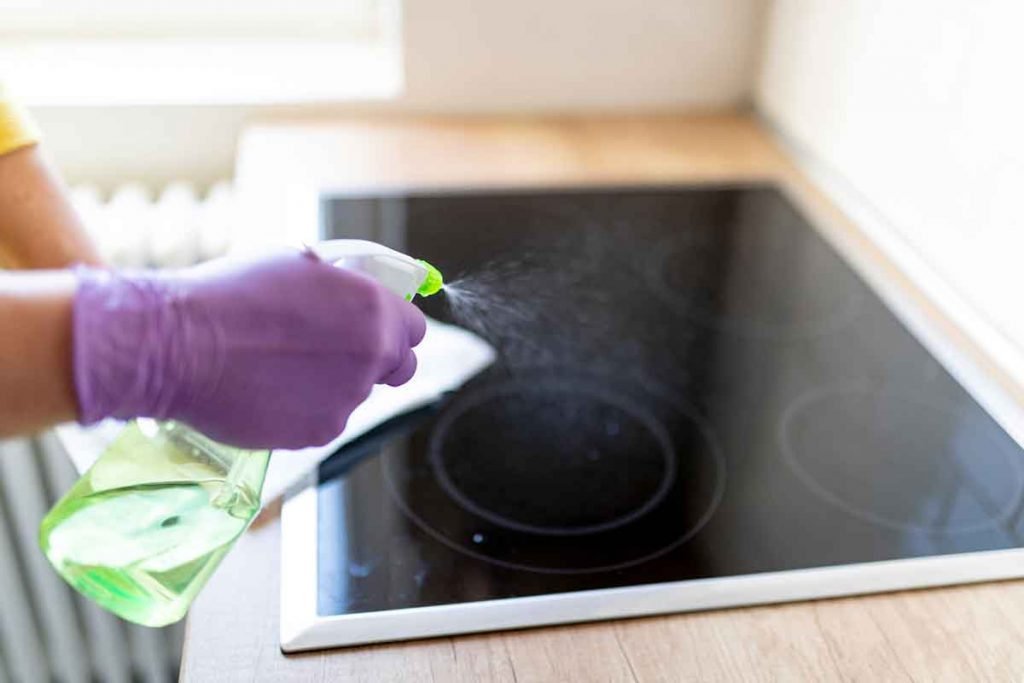Picture this: you have visitors and are set to prepare a delicious meal for them on your sleek induction cooktop. You prepare the ingredients, grab your favorite pan, and place it on the cooktop. Unfortunately, nothing happens; no heat, no beep, no warning sign. The induction cooker cannot detect the pan, what’s the fix?
Your induction cooktop might fail to respond for many reasons. Sometimes it may be minor technical glitches, other times incompatible cookware. Let’s go deeper and look at the problem in more detail:
Reasons Why the Induction Pan Does not Work?
Here are a few reasons why your induction pan is not working.
1. Severely Scratched or Damaged Induction Cooktop
Although easy to clean, induction cooktops are very delicate and sensitive to abrasion. This is why you should never use abrasive sponges, steel wool, salt, and some detergents to clean your induction cooktop. The extensive damage these products could do to the induction cooktop may result in it not working. As an alternative, use ceramic-friendly cleaning products and only do so after your cooktop is adequately cooled off.
2. Your Cookware is Incompatible with the Induction Cooktops
There is a high possibility that your pan is not an induction-ready pan. You can confirm this from the note that is usually stuck at the base of your cookware. Induction cooktops only operate on induction-compatible cookware. They only work with pots and pans that contain ferrous metal at the base.
3. The Size of the Cookware is not Ideal for Your Induction Cooktop
It is important to note that size matters when it comes to cookware. Your cookware’s effectiveness is directly related to the size of the induction cooktop you are using. This means that the diameter of the cooking vessel you are using should be the same as the diameter of the induction hob. If the cookware is too big, then some of its zones will be outside the hob, and your pot will not heat properly. On the other hand, small-based cookware may fail to activate the induction unit.
4. There is Little or no Contact Between Your Cookware and the Induction Cooktops
You should know that induction cooktops don’t work if there is no contact with the pan. Always ensure that your cooktop is flat and thick enough to allow heat transfer from the induction unit. Thin and light cookware may lose shape when exposed to high induction temperatures. This choice of cookware can even end up damaging your cooktop.
5. There Could be Burrs at the Bottom of the Cooking Vessel
The burrs could be preventing the pan from heating up.
6. You Could be Using Defective Cookware
Your cookware may be compromised in terms of shape, thickness, or even magnetic strength. The magnetism in your cookware may not be strong enough to handle heat transfer from the induction unit.
Can Normal Utensils be Used on an Induction Cooktop?
You need certain pots and pans for induction to work properly. This means that not all cookware types can be used on an induction cooktop. The general rule when settling on your ideal induction cooktop cookware is to use one that has a magnetic effect. This means that a magnet should comfortably stick to your cooking pans or sauces of choice.
Can Any Pan be Used on an Induction Cooker?
No. Not every pan or pot is ideal for the induction unit. What pans do not work with induction?
For starters, keep in mind that when you power up an induction, the metal coils under the hob’s glass surface create a magnetic field. It is this magnetic field that interacts with the iron in a pan’s base to create heat. In essence, this means that your choice of cookware cooktop should have some iron in it.
As aforementioned, not all utensils are ideal for induction cooktop use. There are only four materials that are guaranteed to work with the induction cooktop. These materials are graniteware, cast iron, enameled cast iron, and magnetized stainless steel. On the same note, keep off Aluminum, glass, or plastic cookware from your induction cooktop as they would not work.
How Do You Test an Induction Cooktop?
The best way to test whether your cooktop is ideal for induction cooktop use is to use a kitchen magnet. To do so, pass a magnet to the bottom of your cookware. If the magnet clings to the underside, then the cookware in question would work well on an induction cooktop.
In case the magnet grabs the pan softly but then falls, it means that this cookware would not perform well in your induction cooktop. On the other hand, a complete lack of magnetic pull between your cookware and the magnet would mean that the cookware does not contain the right metals for induction cooktop use.
Recently, Induction cooktop manufacturers are sticking a compatibility note or “induction compatible” symbol on the bottom of their cookware as a way of confirming that the cookware is ideal for induction cooktop use.
Clue: Look for the zig-zag/coil symbol.
Luckily, you can improvise your non-ferrous cookware into a ferrous one using a stainless steel induction cooktop heat diffuser. This technological advancement allows you to use your otherwise induction cooktop unfriendly cooktop to make your favorite meal.
Problems You May Encounter While Handling Your Induction Cooktop
Apart from your induction cooker failing to detect a pan, below are other problems you may encounter while handling your induction cooktop:
1. You May Experience Problems While Switching on Your Induction Cooker
Your induction cooker may fail to switch on due to problematic electrical installation, damaged induction hob, out-of-shape power board, or poorly connected terminal block.
2. Your Induction Cooktop’s Touch Panel May Malfunction
Common factors behind a malfunctioning touch panel include an overheating problem, insufficient mains voltage, interrupted module communication, or poor connection between the power module and the processor.
The E Error
if your unit keeps showing an E error, this indicates your power button is not working at all or as intended. To solve this error, you’ll need to reset your cooktop. How do you do this, you ask? Well, it’s easy. All you have to do is to disconnect your unit from power for 30 seconds or so and then reconnect. The E problem will be gone. If the error persists, it could indicate a severe problem, and you’ll need to call a technician to help you fix it.
Your Unit Keeps Switching Off
This is a common problem and easy to fix. On normal occasions, the switching-off error happens if your unit is too hot. To solve this problem, make sure the size of the cookware you use is the same as the burner. If the cookware is too big, it’ll need more energy to heat, and your cooktop will switch off because it’ll be too hot.
Just like other appliances, induction cooking has its fair share of advantages and challenges. We hope that this article has cleared some of the notable induction cooktop problems you may encounter. Enjoy using your induction cooktop.



